With the increasing demand for consumer visual experience and the development of LED intelligent projection technology, more and more intelligent projection devices that can project hundreds of inches of large screens have begun to enter the homes of ordinary people, with their unique small size, large screen and The cost-effective feature has also exposed another problem of LED smart projection when reducing the cost of large-screen consumer users: low brightness, although many models have been introduced recently, the performance of the consumer reflects the brightness, but In many strong lighting environments, high-quality image quality such as TV pictures cannot be obtained, not to mention the brightness performance of the 200-700 ANSI lumens in the intelligent projection world. So at this time, a suitable anti-light screen has become a must-have for friends who play LED smart projection!
Today, we have brought three different types of anti-light screens, namely:
F1:super high brightness gain, 3.5 gain ,but also has an ultra-narrow viewing angle 50
F2:has a brightness gain of 1.2 and a wide viewing angle 120
Q1: with a brightness gain of 1.1, the viewing angle is also very narrow 30
Test machine position: placed on the coffee table, the coffee table is about 50cm high.
Test environment: At 11 o’clock in the morning, the screens were opened, and the indoor daylights and several yellow light lamps were turned on.
Test method: attach three screen samples to the wall, form a rectangular parallelepiped with the white wall, and use the prepared evaluation map (four identical images PS on one map for comparison) to make multi-angle photos. Compared.
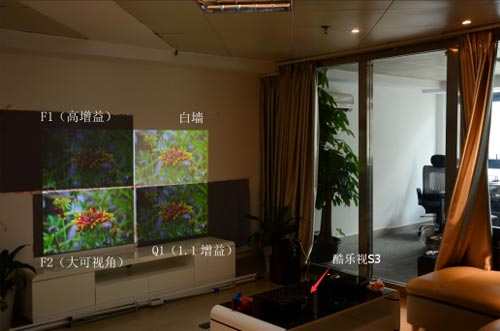
1.(Evaluation environment)
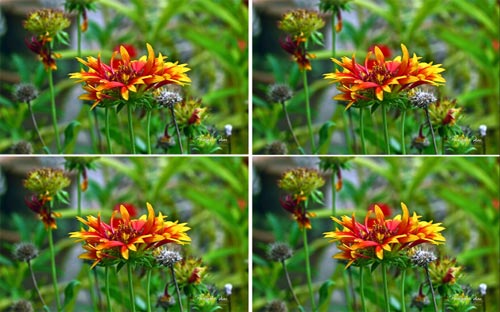
2.(evaluation of the original picture)
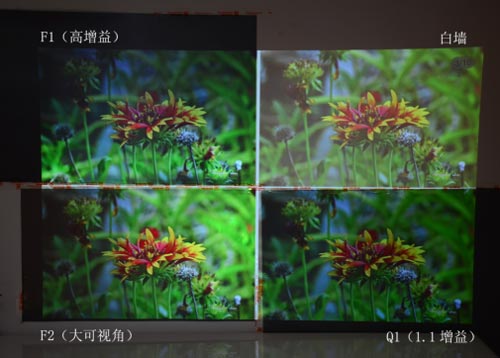
3.(camera head-up picture center point shooting)
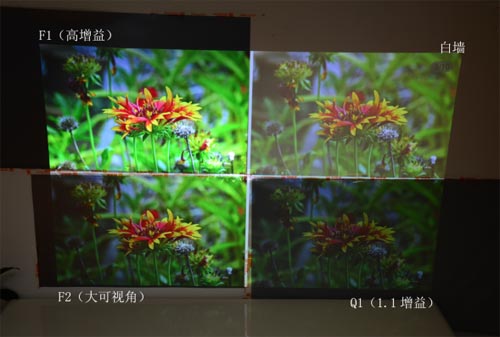
4.(looking from top to bottom)
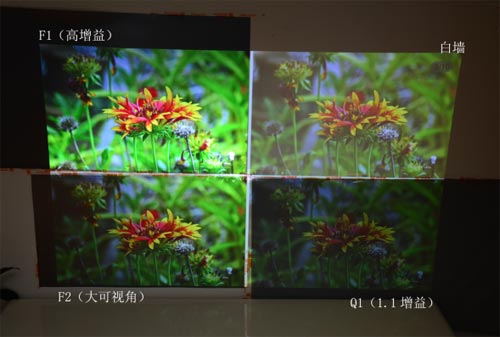
5.(The camera and projector lens are shot on a horizontal line)
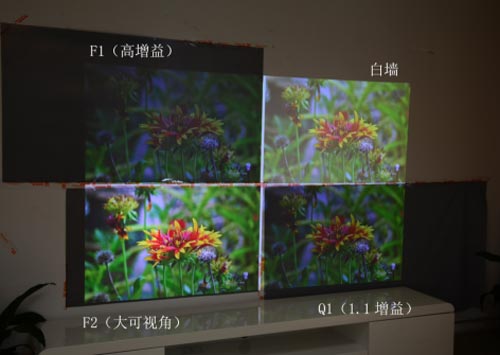
Summary: Compared with the white wall, the advantages of the three screens in brightness, contrast, color and light and dark performance are very obvious. If installed properly, you can get a perfect picture experience in complex lighting conditions. Therefore, it is really necessary to equip your beloved machine with a suitable screen. Finally, these three screens will be officially launched in the official flagship store of Cool Leo Tmall in the near future. Interested friends pay more attention to you! In addition, the characteristics of the three screens are summarized as follows, for your reference at the time of selection:
F1: It belongs to the directional reflection type screen. The viewing angle is small. The incident light is reflected by the screen to the upper angle. The brightness is very high in a certain direction, but the viewing angle is very small, only half the gain of 25°, that is, 50°. The angle of view, the projection installation and viewing position are required, suitable for lifting the projection, because the reflected light will not be completely down at this time, but will be collected to the upper position, directly reflected into the human eye, the look and feel effect is the most good. However, the ultra-high gain is also likely to cause a spot on the screen to form a non-uniform image.
F2: It belongs to diffuse reflective screen with brightness gain of 1.2 and large viewing angle. The half gain angle of the screen is 60°, which is commonly known as 120° angle of view. However, the disadvantage of diffuse reflection on the external harmful light is also very typical. In the environment with strong reflected light, the viewing angle of F2 is obvious no matter where the contrast is degraded. But also higher than the white wall. The requirements for installation are low, and the conventional lifting and seating can be HOLD.
Q1: It is also a directional reflective type anti-light screen, but its reflection direction is completely different from that of F1. Simply speaking, the incident direction and the reflection direction are on a line, and the light is emitted from the projection lens, and the reflected light is also along this. The lines are reflected back, and the brightness gain is obvious in this direction, but there is a negative gain effect at other angles, that is, the angle of view is small, only half-gain of about 25°, and angle of view of about 50°. After experimenting, the picture is best when the human eye and the lens are on a horizontal line.


